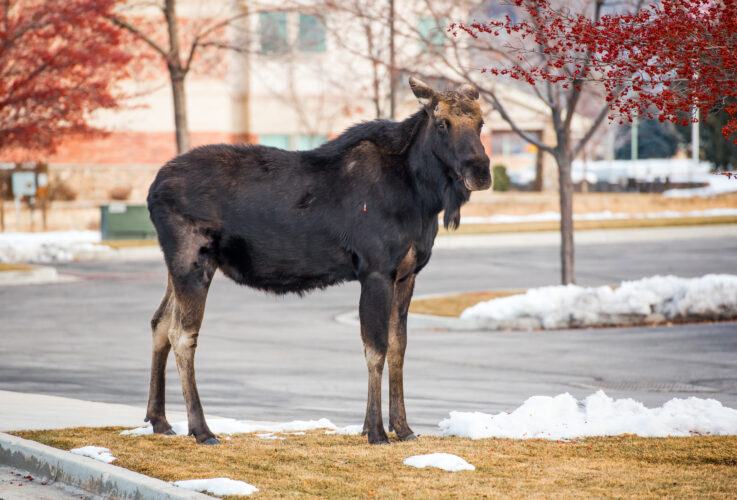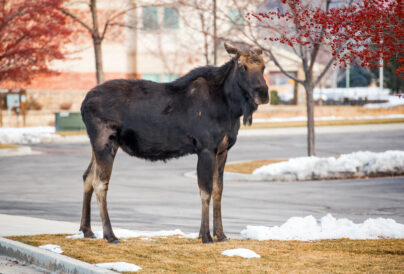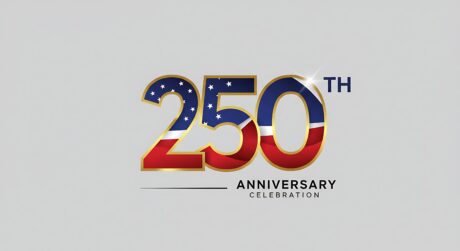DWR reminds residents when to report wildlife sightings

You never know where moose will show up in the winter. This one visited Provo in 2016. DWR biologists shot it with a tranquilizer dart. It’ll be asleep soon.
Winter brings deer, moose, and cougars into lower elevations across Utah
As Utah’s population grows and new development spreads into foothill and canyon areas, encounters with wildlife have become increasingly common — especially during the colder months. The Utah Division of Wildlife Resources is reminding residents that while some sightings are normal and even expected, not every encounter needs to be reported.
Each winter, as snow piles up in the mountains, deer, moose, turkeys, and other wildlife move to lower elevations in search of food. Their presence in neighborhoods often draws predators like cougars, which follow deer herds into the valleys.
While it might seem like wildlife are moving into communities more often than before, the DWR explains that a combination of new development and the rise of doorbell and security cameras is giving Utahns more glimpses of animals that have always been nearby.
“Getting too close to a wild animal can cause it to feel threatened,” said Dax Mangus, DWR big game coordinator. “If it feels threatened, it may act aggressively to protect itself — which can be unsafe for you or your pets. It can also be harmful for the animal, especially in winter when they need to conserve energy to survive.”
Don’t feed the wildlife
The DWR urges residents never to feed wild animals — even if it feels like helping. Feeding can cause serious problems for both people and wildlife, including:
- Public safety risks, as animals are drawn into neighborhoods and roads
- The spread of diseases, such as chronic wasting disease among deer and elk, or avian flu among birds
- Nutritional harm, since wild animals aren’t adapted to human food
Feeding deer can also attract predators, like cougars, to neighborhoods. “Concentrating deer and other wildlife near towns can lead to more traffic accidents and conflicts,” Mangus said. “Even non-predators like deer or moose can become aggressive, especially around dogs.”
When to report wildlife sightings
While many sightings don’t require a report, there are times when residents should contact the DWR for assistance:
Cougars:
Report immediately if a cougar has killed an animal in your yard, acts aggressively, or repeatedly appears on cameras. A one-time sighting in foothills or on security footage usually doesn’t require a report.
Bears:
Black bears should be reported if they’re acting aggressively, damaging property, or found inside city limits. Bears are generally in hibernation from November through March, so winter sightings are rare.
Moose:
If a moose wanders into a residential or populated area, contact the DWR so it can be safely relocated. Moose can remain in urban areas for long periods and may become aggressive if approached — especially by people with dogs.
Deer:
Deer should only be reported if they display aggressive behavior, particularly during breeding season in November. Dead deer found in neighborhoods or on roads should also be reported so crews can remove them. Residents can also use the Utah Roadkill Reporter app to help DWR track road-related wildlife deaths.
Bobcats:
Sightings are less common, but report if a bobcat attacks a pet, livestock, or causes property damage.
Turkeys:
Report turkeys that are damaging property or creating a nuisance so they can be relocated. The DWR cautions against scattering seed or corn to feed them, which can lead to disease outbreaks and property problems.
Birds of prey:
Hawks and eagles often rest along roadsides in winter after feeding on roadkill. Report only if the bird appears injured, stays in one spot more than 12 hours, or is stranded in the roadway.
Keeping Utah’s wildlife wild
The DWR reminds Utahns that wild animals are an important part of the state’s natural landscape. Giving them space and avoiding direct interaction helps protect both people and wildlife.
If you are injured by wildlife, seek medical attention and report the incident to the DWR immediately.
For more information on preventing wildlife conflicts and keeping communities safe, visit the Wild Aware Utah website at wildawareutah.org.



